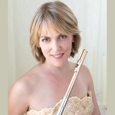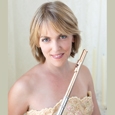Editor’s Note: In the December issue Jake Fridkis discussed the importance of playing softly and offered some tips to improve this skill. Here are some more ideas.
Take a minute and describe your tone. Do words like rich, resonant, full, warm, vibrant come up? I hope so. Do you associate a dynamic with this tone? If so, most likely it is mf or forte. This tone and dynamic combination is probably your comfort zone of playing. Next describe your tone when you are playing softly. Did the adjectives change? Ideally not, but if they did, try the following ideas to increase your confidence and improve your soft playing.
1. Change your thinking
The first step to becoming less worried about playing softly is to change your mental framework. Try to think about your tone being the same whether you play loudly or softly. Even when the sound is softer, the quality of the tone should carry over completely. Playing softly should basically feel the same as playing in your comfort zone with some minor adjustments for intonation and color.
2. What the composer wants
When determining how to play a passage softly, determine what the composer’s intention is. For example, does the composer want an echo effect or a color change? Once you determine the desired effect, you will feel more comfortable creating it. Also, make sure you are setting up the dynamic change in a way that will not end in failure. For example, do not start an ascending passage too softly so the diminuendo has nowhere to go.
3. Dolce
When you see the word dolce with a piano dynamic, the composer is asking for both a color and a dynamic change. To successfully achieve this, the shape of your lips should change. A great way to practice colors in your tone, in loud and soft dynamics, are with different vowel shapes in your lips and mouth. For example, compare the color of your sound when playing with an A shape versus an eew shape. Practice these shapes while playing softly and loudly. Both should create new colors.
4. Practice playing piano
Always practice playing softly. Flutists tend to practice the most in the dynamics that feel the most comfortable because it is the tone they like best. This means that the extremes, soft and loud, are not practiced regularly. To feel comfortable playing softly, you will need to log significant time playing that way. This practice should include exercises with tuning drones so you can adjust intonation accordingly.
5. Crescendo/decrescendo
Crescendo and decrescendo exercises are an effective way to develop a broad range of dynamics. Learning to vary the aperture size and air speed will help develop dynamic changes. Playing in tune is, of course, part of the goal.
6. Soft scale and exercise practice
Practice playing exercises and scales in all ranges at a piano dynamic. First ensure you are playing evenly with a good sound at a moderate dynamic and then try them again playing softly.
7. Embouchure
Your embouchure has to reflect the tone. When playing softly, tense lips result in the tone becoming airy and dry. It may help to envision the definition of soft: easy to mold, cut, compress, or fold; not hard or firm to the touch. Make your lips fit this description and add supported air to achieve a beautiful soft sound.
8. Aim that air
Air direction has a huge influence on intonation. If you struggle to keep your soft playing in tune, remember to adjust the air direction so that you are aiming above the wall of the lip plate or trying to blow up your nose as some flutists say.
9. Flute in the chin
When you feel tense and nervous about play softly with a good tone, especially in the third and fourth octave, check the pressure of your lip plate in the chin. If you notice a significant amount of pressure, try to place the embouchure plate lower in the chin to free the bottom lip so you can direct the air up more.
10. Intonation
It is easier to lip the pitch down than to raise it. Be sure your headjoint is inserted where it is easy to lip the pitch in either direction






